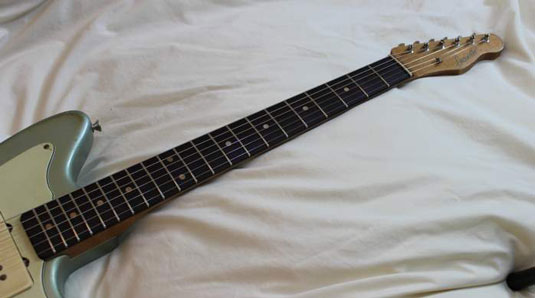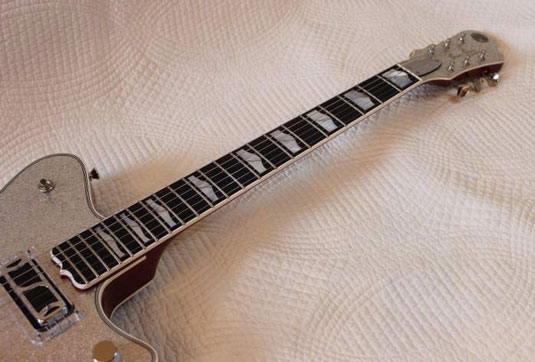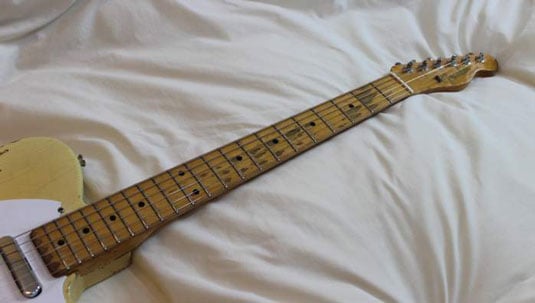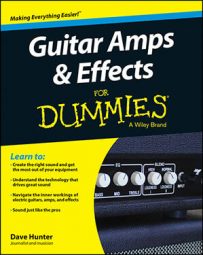Every guitar’s neck plays partner in anchoring the strings, so the wood it is made from plays a part in the instrument’s sound, in tandem with the wood and construction of the body. Many of the woods used for guitar necks are also, unsurprisingly, those used in their bodies.
Rosewood

Rosewood is commonly used for fingerboards on necks made from maple, mahogany, and Korina. Rosewood can contribute some complexity to the highs, with thick and creamy lows and good overall depth and warmth.
It is a dark-brown wood that often has a subtle grain hidden within its rich color, although it sometimes displays beautiful figuring, particularly when found as Brazilian rosewood, a wood whose sale and importation is now strictly regulated.
Ebony

Ebony has often been used for fingerboards on more upscale guitars and has traditionally appeared on many high-end archtops, Gibson’s Les Paul Custom, and other expensive models. An extremely hard, dense wood, it contributes clarity and brightness to the voice of many guitars on which it is used. It’s a dark wood verging on black, with little grain or figuring usually visible.
Pau Ferro
Pau Ferro is a dense, hard wood that has been used more and more in recent years due to the scarcity of rosewood and ebony. Its sonic characteristics tend to land somewhere between the two, and it has a dark-brown appearance, often with some stripey reddish-brown and black highlights that can be extremely attractive.
Maple

Maple is of course used as a fingerboard in and of itself, often on a one-piece maple neck with no glued-on fingerboard, or sometimes in a maple cap neck construction, for which the top of the neck is sawn off and reattached. An all-maple neck/fingerboard tends to have a bright, clear tone with enhanced crispness and definition.
Being a light wood, this is the one fingerboard wood that is traditionally sprayed with lacquer or polyurethane for protection as part of the finishing process (whereas most others are left unfinished, or are lightly oiled). Even so, many maple fingerboards display considerable wear after years of steady use.

